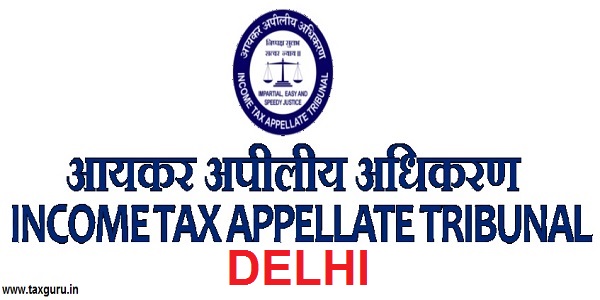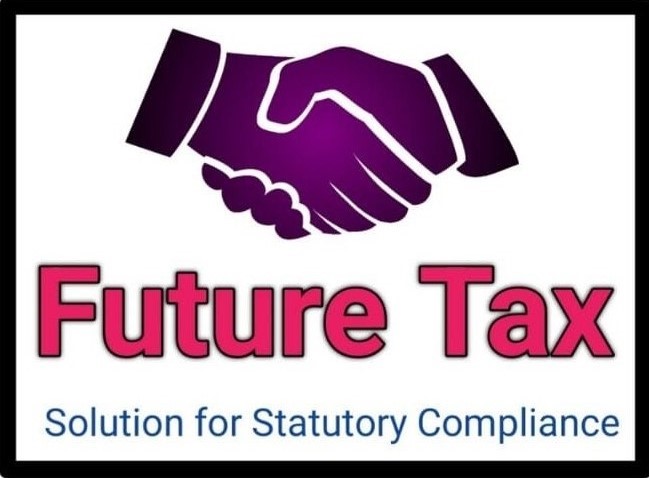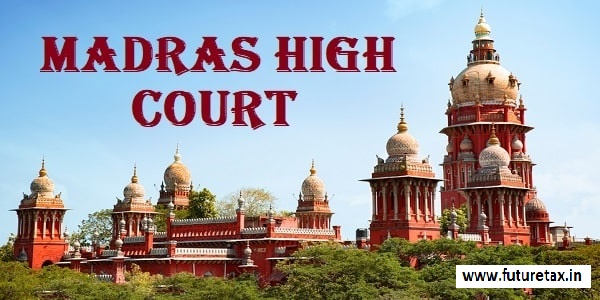
Investment giving rise to exempt income to be considered for disallowance u/r 8D in Tamil
- Tamil Tax upate News
- February 6, 2025
- No Comment
- 39
- 17 minutes read
Airport Authority of India Vs DCIT (ITAT Delhi)
ITAT Delhi remanded the issue back to file of AO to re-compute disallowance under rule 8D(2)(ii) of the Income Tax Act by taking those investment which give rise to exempt income @1% of average value of investment.
Facts- The assessee in its return of income disclosed dividend income of Rs. 19,65,60,000/- and claimed as exempt. AO during the course of assessment proceedings asked the assessee to furnish details of expenditure debited to the profit and loss account in relation to exempt income and show caused as to why disallowance u/s 14A of the Act read with 8D of the Rule be not made. Assessee claimed before AO,that, since the investment have been made from own funds, no disallowance is called for u/s 14A of the Act read with Rule 8D(2)(ii) of the Rules. AO not agreeing with the submissions of the assessee, invoked the formula under 8D(2)(ii)of the rules and made disallowance @1% average value of investment of Rs. 17,15,47,000/-.
CIT(A) deleted the disallowance. Being aggrieved, revenue has preferred the present appeal.
Conclusion- Held that the entire premise of the CIT(A) was interest free fund available with the assessee but we are of the view that finding of the CIT(A) are recorded for the purpose of disallowance of old clause i.e. under Rule 8D(2)(ii) of the rules prior substitution of the above amendment i.e. prior to 02.06.2016. It means that the average value of investment under the substituted Rules is to be made @1% on average value of investment as held by Special Bench of this Tribunal in the case of ACIT vsVireet Investments P Ltd reported in 165 ITD 27 (Del) (SB) wherein, it has been held that for the purpose of computation of disallowance of average value of investment the AO has to take only the instrument which gives rise to exempt income and not the investment which does not give rise the investment. In terms of above, we set aside the order CIT(A) on this issue and remand the issue back to the file of the ld AO.
FULL TEXT OF THE ORDER OF ITAT DELHI
These cross appeals, by assessee and by revenue, are arising out of the order of the CIT(A)/ National Faceless Appeal Centre (NFAC)[hereinafter referred to as „CIT(A)‟] Delhi in appeal No. ITBA/NFAC/S/250/2022-23/1049107983(1) dated 25.01.2023. The assessment was framed by AO of NFAC, Delhi [hereinafter referred to as „AO‟ u/s 143(3) r.w.s. 144B of the Income Tax Act, 1961 (hereinafter referred as „the Act‟) vide his order dated 28.09.2021 for AY 2019-20.
ITA No.838/Del/2023 – Revenue’s appeal
2. The only issue in this appeal of revenue is as regards to order of the CIT(A) deleting the addition of disallowance made by AO by invoking the provisions of Section 14A of the Act under Rule 8D of the Income Tax Rules, 1962 [hereinafter referred to as „Rules)‟ in regard to the expenditure relatable to exempt income. For this, the Revenue has raised various grounds which are argumentative and exhaustive and hence, need not to be reproduced.
3. The brief facts of the case are that the assessee in its return of income disclosed dividend income of Rs. 19,65,60,000/- and claimed as exempt. The AO during the course of assessment proceedings asked the assessee to furnish details of expenditure debited to the profit and loss account in relation to exempt income and show caused as to why disallowance u/s 14A of the Act read with 8D of the Rule be not made. The assessee replied that the dividend income of Rs. 19.66 crores was received from GHAIL and the same has been claimed as exempt income. It was claimed that as per policy laid down by the Government of India and directions of Civil Aviation Ministry, joint venture investment has been made for operations of various airports in the country. Therefore, such trade investment in joint venture amounting to Rs. 1715.47 crores was made. It was pleaded that the assessee has interest free fund in the form share capital of Rs. 656.56 crores and reserve and surplus of Rs. 14,270.06 crores aggregate to Rs. 14,926.62 crores. It was claimed that the investment in shares is just Rs. 1715.47 crores. Assessee claimed before AO,that, since the investment have been made from own funds, no disallowance is called for u/s 14A of the Act read with Rule 8D(2)(ii) of the Rules. The AO not agreeing with the submissions of the assessee, invoked the formula under 8D(2)(ii)of the rules and made disallowance @1% average value of investment of Rs. 17,15,47,000/-. Aggrieved assessee preferred appeal before the CIT(A).
4. The CIT(A) after considering the submissions of the assessee and the decision in AY 2012-13 and other years in assessee‟s own case, deleted the disallowance by observing that interest free fund available with the assessee are more than the investment made and, for this, he relied on the decision of the Hon’ble Supreme Court in the case of South Indian Bank Ltd. v. Commissioner of Income Tax [(2021) 438 ITR 1 (SC)]. Aggrieved, revenue is in appeal before us.
5. We have heard rival submissions and gone through facts and circumstances of the case. We noted that w.e.f. 02.06.2016, the legislature by 14th amendment has amended the Rules and sub clause (ii) of Rules 8D(2) has been substituted as against the disallowances of interest against 1% of average value of monthly average opening and closing balance of value of investment. Relevant clause reads as under:-
“Rule 8D(2)
1. ……………………………
2. In the Income-tax Rules 1962, in rule 8D,-
(I) for sub-rule (2), the following sub-rule shall be substituted, namely:-
“(2) The expenditure in relation to income which does not form part of the total income shall be the aggregate of following amounts, namely:—
i. the amount of expenditure directly relating to income which does not form part of total income; and
ii. an amount equal to one per cent of the annual average of the monthly averages of the opening and closing balances of the value of investment, income from which does not or shall not form part of total income:
Provided that the amount referred to in clause (i) and clause (ii) shall not exceed the total expenditure claimed by the assessee.”;
(II) sub-rule (3) shall be omitted.”
6. We noted that the entire premise of the CIT(A) was interest free fund available with the assessee but we are of the view that finding of the CIT(A) are recorded for the purpose of disallowance of old clause i.e. under Rule 8D(2)(ii) of the rules prior substitution of the above amendment i.e. prior to 02.06.2016. It means that theaverage value of investment under the substituted Rules is to be made @1% on average value of investment as held by Special Bench of this Tribunal in the case of ACIT vsVireet Investments P Ltd reported in 165 ITD 27 (Del) (SB) wherein, it has been held that for the purpose of computation of disallowance of average value of investment the AO has to take only the instrument which gives rise to exempt income and not the investment which does not give rise the investment. In terms of above, we set aside the order CIT(A) on this issue and remand the issue back to the file of the ld AO in the following terms:-
i. that the AO will find out the investment which gives rise to exempt income.
ii. then the AO will re-compute the disallowance by taking those investment which give rise to exempt income @1% on average value of investment.
iii. the AO will also verify the expenditure as described in proviso to Rule 8D(2)(ii) wherein, it is referred that the amount referred to in clause 1 and clause 2 would not exceed to total expenditure claimed by the assessee. The AO will find out the expenditure claimed by the assessee in terms of above and then will re-decide the issue.
7 Therefore, in terms of above, appeal of the revenue is allowed for statistical purposes and order of the CIT(A) and that of AO is set aside.
ITA No. 830/Del/2023 – Assessee’s appeal
8. The only issue in this appeal of the assessee is as regards to the order of the CIT(A) in not allowing additional ground raised by the assessee during the course of first appeal and thereby not considering that the income of Rs. 1,02,88,14,859/- pertaining to the concessional fee received from AAICLAS Co. Ltd has already offered for taxation in AY 2018-19. For this, the assessee has raised various grounds which are argumentative and exhaustive and hence, need not to be reproduced.
9. Brief facts of the case are that during the course of assessment proceedings, the AO issued notice u/s 142(1) of the Act on 25.08.2021, whereby information was called for vide Question No. 13 in respect of taxability of concessional fee of Rs. 232.67crores receivables from AAICLAS Company Ltd for FY 2017-18 and FY 2018-19. The relevant question pointed out by the ld counsel for the assessee before us reads as under:-
“13. With reference to Note ..(v) of the Annual Report, please explain if the Concession Fee of Rs. 232.67 crores receivable from AAICLAS Co. Ltd for the FYs 2017-18 and 2018-19 has been admitted to tax in the return of income. If so, please furnish details.”
10. In response to the above question, the assessee filed detailed reply vide letter dated 26.08.2021 explaining that concessional fee of Rs. 232.67 from AAICLAS Company Ltd, which is a subsidiary of the assessee, has been offered to tax in AY 2018-19. The assessee provided details at page No. 1902 of assessee paper book where Rs. 544.63 croreswhich includes Rs. 232.67 croresout of Miscellaneous Income is disclosed. The AO while framing assessment has assessed total income as admitted by assessee at Rs. 50,63,57,60,580/-.
11. At the stage of CIT(A), the assessee moved additional grounds and the additional grounds as raised before the CIT(A) are reproduced in the order of CIT(A) at page 28 in para 11 which reads as under:-
“1. On the facts and circumstances of the case, Ld Assessing Officer has erred both in facts and in law in assessing total income at Rs 5080,73,07,580/-, the assessed amount includes concessional fees of Rs 102,88,14,859/-, received from AAICLAS Co Ltd (a subsidiary of the Assessee), pertains to Assessment Year 2018- 19 which has been accounted in current year (AY 2019-20) and also offered to tax in AY 2018-19.
2. On the facts and circumstances of the case Ld Assessing Officer specifically examined the fact, that Assessee has offered to tax Concessional Fees from AAICLAS Co Ltd. of total Rs 232,67,28,046/- for FY 2017-18 and FY 2018-19 out of which Rs 102,88,14,859/- pertains to AY 2018-19 and assesse too inadvertently not reduced such amount.
3. On the facts and circumstances of the case Ld Assessing Officer should have on its own excluded to consider income of Rs 102,88,14,859/- which pertains to AY 2018-19. The lapse has resulted double taxation of Rs 102,88,14,859/- in current year.
4. That the appellant craves leave to add amend or alter any of the grounds of appeal.”
12. Ld counsel for the assessee before us pointed out from the order of the CIT(A), wherein, audited financial statement of the assessee are reproduced with miscellaneous income that includes concessional fee received from AAICLAS Co Ltd is declared at Rs. 232,67,28,047/-. The ld counsel for the assessee before us stated that the assessee has already offered part of the income of Rs. 1,02,88,14,859/- which pertains to AY 2019-20, which is already offered for taxation in AY 2018-19. Before us, he stated that part belongs to AY 2018-19 and part belongs to 2019-20 but he could not submit bifurcation of the same. He also stated that the CIT(A) simply confirmed the action of the AO by stating that the AO has no power to entertain fresh claim made by the assessee after filing the original return of income other than by filing the revised return. He also relied on the decision of the Hon’ble Supreme Court in the case of Goetze India Ltd Vs. CIT (2006) 157 taxman 1(SC). For this, the CIT(A) observed as under:-
“I have considered the assessment order, additional grounds of appeal raised by the Appellant, submissions filed the appellant and the comments of the AO on the additional grounds of the appeal. Considering the facts of the case, the additional grounds of appeal raised by the Appellant are admitted for adjudication. I find that the Appellant itself has offered income of Rs.232.67 crores concessional income received from AAICLAS co. Ltd for AY 2019-20 but after completion of the assessment u/s 143(3) on 28/09/2021 for AY-2019-20, the Appellant has detected the error in Oct., 2022 that the income of Rs.102.88 which is included in Rs.232.67 crores has already been offered for taxation in AY 2018-19 and therefore the Appellant has filed application u/s 154 before the AO in Oct., 2022, which is still pending. The AO in his report received on 24/01/2023 has mentioned that the Appellant should have filed revised return u/s 139(5) for making the present claim. Further the AO submitted that the AO has no power to entertain fresh claim made by the assessee after filing the original return of income other than by filing the revised return. I find that the Appellant has not filed-revised return for AY 2019-20 within the prescribed time limit for making the above claim and it also appears that the Appellant has not applied for condonation of delay in filing revised return for AY2019-20 before the jurisdictional Pr.CIT. As far as the filing of rectification application is concerned, I find that there is no error in the assessment order passed by the AO which could be rectified u/s 154. In view of the above facts, the additional grounds of appeal No. 1 to 3 raised by the Appellant are dismissed.”
13. We, after hearing both the sides and going through the facts of the case, notice that the income of Rs. 102.88 crores as claimed by the assessee is included in Rs. 232.67 crores which is already offered for taxation in AY, needs verification. Before us, the ld counsel for the assessee could not explain how this income of Rs. 102.88 is included in this income of Rs. 232.67 offered in AY 2018-19. At one point of time, the ld counsel made submission that part income falls in AY 2018-19 and part falls in AY 2019-20. The entire controversy raised by assessee seems plausible and there should not be double taxation of an income. There is no impediment for Tribunal not to entertain new claim as held by Hon’ble Supreme Court in the case of Goetze India (supra), wherein Hon’ble Supreme Court has laiddown the principle that appellate authority can entertain a fresh claim. Hence, we admit this additional ground and set aside the order of the CIT(A) and remand this issue back to the file of AO with following directions:-
i. AO will first examine income offered for taxation for AY 2018-19 amounting to Rs. 232.67 crores, whether the same includes the income of Rs. 102.88 crores as claimed by the assessee and admitted in AY 2019-20 i.e., the present assessment year. In case this is admitted in AY 2018-19 or even part of this income is admitted in AY 2018-19, the same has to be excluded in the present AY.
14. Hence, with the above observation, we remand this issue back to the file of the AO.
15. In the result, the appeal of the assessee as well as the revenue are set aside and allowed for statistical purposes.
Order pronounced in the open court on 15/01/2025.




